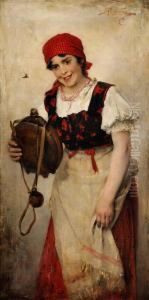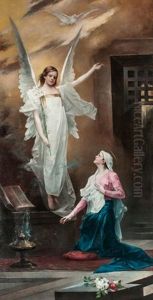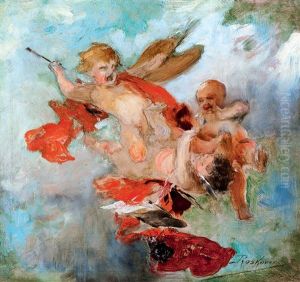Ignac Roskovics Paintings
Ignac Roskovics was a distinguished Hungarian painter and graphic artist known for his contributions to religious and historical painting, as well as portrait art. Born on November 9, 1854, in Máramarossziget, then part of the Austro-Hungarian Empire (today Sighetu Marmației, Romania), Roskovics grew up in a time of significant cultural and political shifts in Europe, which influenced his artistic development and the themes of his work.
Roskovics's artistic journey began at the Academy of Fine Arts in Vienna, where he was initially drawn to architecture. However, his passion soon shifted towards painting, particularly under the influence of historical and religious themes. He furthered his studies in Munich, a vibrant art center in the late 19th century, which exposed him to various artistic movements and techniques. This period was crucial in shaping his style, characterized by meticulous attention to detail, vibrant coloration, and a deep sense of spirituality.
Throughout his career, Roskovics was deeply inspired by the rich history and religious traditions of Hungary and the broader European context. His works often depicted scenes from the Bible, saints' lives, and episodes from Hungarian history, rendered with a realism that brought these stories to life for contemporary viewers. His religious paintings, in particular, are noted for their emotional depth and the ability to convey the sacred in a personal, intimate manner, making him a sought-after artist for churches and religious institutions.
In addition to his religious and historical paintings, Roskovics was an accomplished portraitist, capturing the likenesses of many notable figures of his time with psychological depth and sensitivity. His portraits are celebrated for their detailed realism and the ability to capture the essence of the subject's character.
Ignac Roskovics's contributions to art were widely recognized during his lifetime, and he received numerous commissions for public and private works. His legacy continues to be appreciated for its artistic merit and its role in the cultural and spiritual history of Hungary and beyond. Roskovics passed away on January 31, 1915, leaving behind a body of work that remains influential in the realms of religious and historical painting. His art is preserved in various museums and collections, attesting to his enduring significance in the history of European art.


